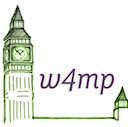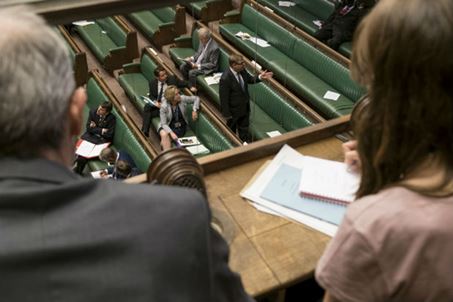Presenting a petition to 10 Downing Street in person
Petitioning 10 Downing Street can be a simple and effective way of publicising a cause.
Presenting a petition to 10 Downing Street can provide an excellent photo opportunity and highlight a campaign in a way that could be attractive to your local press. It’s also a relatively simple thing to organise. Please note, however, that the Prime Minister never meets petitioners – even if they are cute children or war veterans.
Please note petitions cannot be booked in for Tuesday or Wednesday before 2pm. They also require a minimum of ten clear working days’ notice from receipt of your application form to process petition request.
Petitions may be delivered to 10 or 11 Downing Street on the following days:
Monday: 0900-1700
Tuesday: 1400-1700
Wednesday: 1400-1700
Thursday: 0900-1700
Fridays: 0900-1700
Saturday: 1000-1600
In the first instance, all petition requests go to have to go to the Downing Street Liaison Office. Petition forms MUST reach the Downing Street Liaison Team office, allowing ten (10) working days, before the intended delivery date. The petition submission date and petition delivery date are not included in the 10 working days. Any name changes to the petition also require ten (10) full working days. Any changes inside the ten (10) days will be refused.
The application form can be found here.
Please complete the form and return it, remembering ten (10) working days to clear petition.
E-mail to: PaDPmailbox-DSLO@met.police.uk
Tel. No: 0203 276 2934 (answer phone) or 0203 276 2933
Please note the following:
No more than six (6) petitioners will be permitted entry to Downing Street. If a petitioner in the group requires the assistance of a carer, the carer will not count towards the six (6), but their details must be provided so the relevant checks can be completed.
No more than six (6) MP’s/Peers are allowed to enter with the petition and full details are required at time of application. This information must come from the lead petitioner/organiser. If MP’s/Peers turn up on the day without police being given prior warning, they will be refused entry. Please see the last page on the form to provide MP’s/Peers details if applicable.
Staff/interns of MP’s/Peers who attend will be refused entry, unless they are a named petitioners on the petition form.
Photographers, cameramen and other press do not have to be included in the six (6) petitioners, if they are in possession of a valid Press Card Authority photo ID – the UK Press Card Authority
No placards, banners, loud hailers or fancy dress or any props will be permitted. (National costume will not be excluded, although prior warning is required)
Please ensure all petitioners bring official photo-identity documentation, ie driving licence, passport or travel pass, when delivering their Petition to Downing Street. Photos / copies of driving licence/passports on mobiles are not accepted.
All petitioners will be subject to a search as a condition of entry into Downing Street.
For security reasons, the Prime Minister’s Office will not accept sealed petitions. Please ensure your petition is delivered in an unsealed envelope or box. No10 will also accept USB sticks with signatures.
Please include a return address within your petition, to enable Downing Street to send an acknowledgement.
Downing Street will only accept one 2500 sheet box of A4 paper at the door of No10. The remainder should be sent to 9 Howick Place, SW1P 1AA. Please address to No10, including the petition details/date on the outside of the boxes.
The Metropolitan Police will make every effort to facilitate arrangements to enable delivery of the petition; however, matters of State must take precedence. As a result, alterations to booked arrangements can be made with short notice, in such cases, petitions may be delayed, accepted at the gate, or you may be offered an alternative appointment.
The Metropolitan Police recognise the importance of these events to petitioners and will endeavour to facilitate photography or film recording of the occasion where possible. You will have a maximum of 20 minutes in Downing Street for hand in and photo/media.
On the relevant day and time, attend the front gates of Downing Street and introduce yourself to the Police Officer on duty at the pedestrian gate. The officer will direct you and your party through security search prior to delivery of the petition.
Remember, your constituents have probably come a long way to petition the Prime Minister. If you can, give them a short tour of the Palace and buy them a drink in the Terrace Cafeteria. Make them feel they have had a day out!
e-Petitions
Any British Citizen or UK resident can start a petition, and you will need five other people to support the application. Simply go to https://petition.parliament.uk/ and follow the instructions on that page. There is an 80 character limit for the title of your petition and you need to be very clear what you are asking the Government to do. Once you have submitted the title, the next page will ask you to provide further detail on what you want the Government or Parliament to do, and why you want them to do it. You can find further information on how petitions work here: https://petition.parliament.uk/help#standards
Once your petition is live, you will be able to publicise it and anyone will be able to come to the website and sign it. They will be asked to give their name and address and an email address that can be verified. The system is designed to identify duplicate names and addresses, and will not allow someone to sign a petition more than once. Anyone signing a petition will be sent an email asking them to click a link to confirm that they have signed the petition. Once they have done this, their name will be added to the petition.
Your petition will show the total number of signatures received. It will also display the names of signatories, unless they have opted not to be shown.
If a petition receives more than 10,000 signatures, then it will receive a response from the Government. If it receives more than 100,000 signatures, then it will be considered for debate in the House of Commons.
Downing Street will email the petition organiser and everyone who has signed the petition via the website giving details of the Government’s response.
Ask your MP to present a public petition to Parliament
A public petition is a petition to the House of Commons presented by an MP. They must ask clearly for the House of Commons to take some action. A petition cannot request a grant or charge, but it can ask for a change in policy.
There is detailed guidance on how to do this on the parliament website: https://www.parliament.uk/get-involved/sign-a-petition/paper-petitions/
One thing that page doesn’t tell you, is that the declaratory paragraph can only be one single sentence. Many petitions get round this by using semicolons to separate out the different parts. For example “This petition notes that xxx; further that yyy; and further that zzz“.
It is advisable to send the draft wording of your petition to the Clerk of Petitions before you start sending it out for signatures, so that they can check that the wording is correct. Better to do this, than to get lots of signatures and then have the petition rejected because the wording is not ‘orderly’. The Clerk can also send you a template to work with.
Once a Public Petition has been accepted, it will be printed in Hansard, as will the Government’s response once it has been issued.

